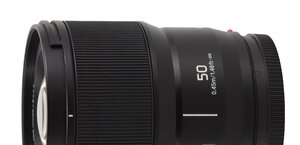Sigma S 150-600 mm f/5-6.3 DG OS HSM
8. Vignetting

At 150 mm focal length and the maximum relative aperture the light fall-off in the frame corners amounts to 19% (−0.61 EV). On stopping down the aperture to f/5.6 the vignetting is reduced to 14% (−0.43 EV) and it disappears almost completely by f/8.0, reaching just 5% (−0.14 EV).
Please Support UsIf you enjoy our reviews and articles, and you want us to continue our work please, support our website by donating through PayPal. The funds are going to be used for paying our editorial team, renting servers, and equipping our testing studio; only that way we will be able to continue providing you interesting content for free. |
- - - - - - - - - - - - - - - - - - - - - - - - - - - - - - - - - - - - - - - - - - - - - - - -
At 300 mm the situation is even better – at the maximum relative aperture the vignetting is 14% (-0.45 EV). After applying f/8.0 that aberration vanishes almost completely, being reduced to 5% (−0.15 EV).
The combination of 450 mm focal length and f/6.3 aperture means the brightness loss in the frame corners of 18% (−0.56 EV). By f/8.0 the vignetting level decreases to just 9% (−0.28 EV). At the maximum focal length there are the biggest problems as the vignetting goes up as high as 25% (−0.85 EV). On stopping down to f/8.0 that aberration decreases to 16% (−0.51 EV), and by f/11 it amounts to just 7% (−0.22 EV).
There are more serious vignetting-related problems on full frame and photos below show it very clearly.

Already at the minimum focal length this aberration is keenly felt because it reaches 45% (−1.75 EV) with the lens wide open. By f/5.6 it decreases to 41% (−1.5 EV) and by f/8.0 to 19% (−0.61 EV). Only by f/11 you can say the problem disappears almost completely (7% and −0.20 EV).
At 300 mm the lens fares even worse – with the aperture fully open you has to take into account the loss of 48% of light in the frame corners (-1.91 EV). By f/8.0 the losses of photons are still noticeable, amounting to 29% (−0.99 EV). Even by f/11 the vignetting makes itself felt, being on a level of 21% (−0.67 EV); only by f/16 it decreases to 14% (-0.44 EV).
Similar results can be observed at 450 mm, where, by f/6.3 the vignetting is 47% (−1.85 EV) and by f/8.0 it can decrease to 33% (−1.15 EV). By f/11 and f/16 the brightness loss in the frame corners amounts to, respectively, 26% (−0.86 EV) and 18% (−0.59 EV).
The most serious situation, though, can be seen at 600 mm focal length where, at the maximum relative aperture, the vignetting levels get to 51% (−2.05 EV). On stopping down the lens to f/8.0 that aberration still remains distinct, amounting to 39% (−1.45 EV). Also by f/11 and f/16 you don’t have any problems with spotting the vignetting as its levels, measured by us, were respectively 34% (−1.21 EV) and 26% (−0.88 EV).
I admit the results of the Sigma in this category are surprising. We thought that a lens noticeably bigger and heavier than the Tamron 150-600 mm would be able to fare better and the situation is quite opposite. Here the Sigma constructors didn’t exactly distinguished themselves.
 |
 |
 |
 |






